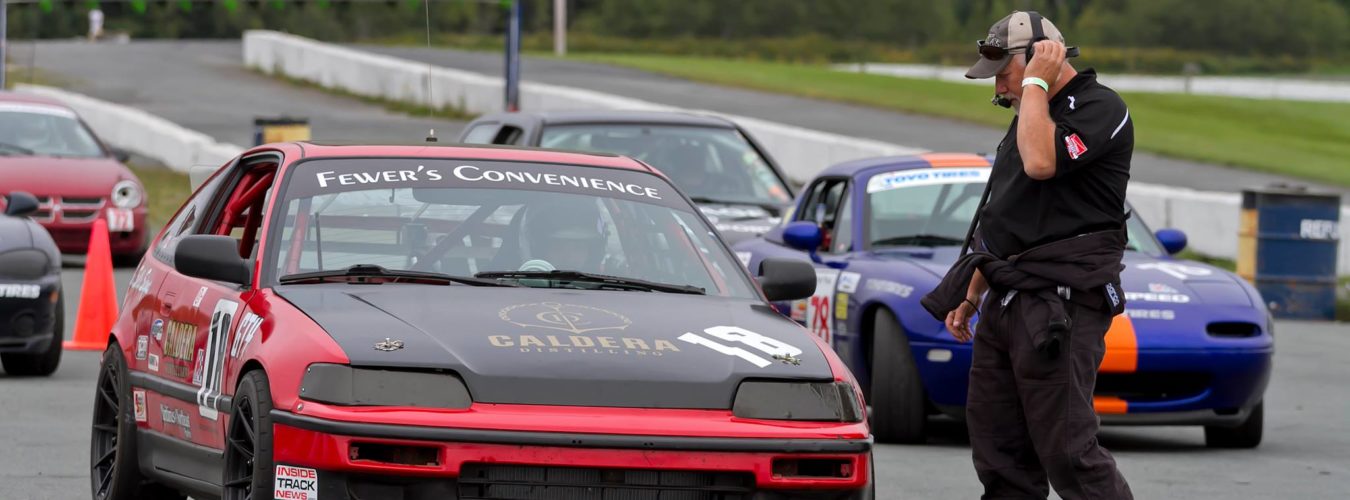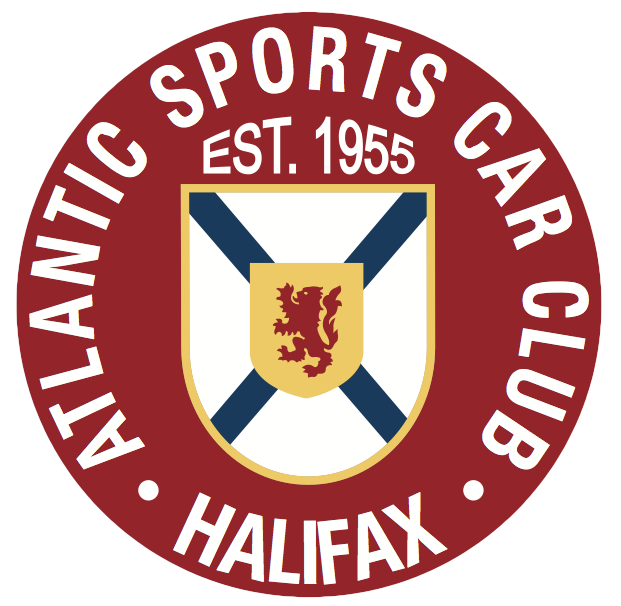In the Atlantic Region there are several kinds of RallySport events held throughout the year. These include TSD/NAVEX Rallies, RallyCross and RallySprint events. Currently ASCC hosts only TSD/NAVEX type rallies. The Bluenose Autosport Club hosts more high-performance RallyCross and RallySprint events regularly. See the Rally East website for more details on these types of rallies.
What is a TSD/NAVEX Rally?
TSD (Time/Speed/Distance) rallying is a safe, enjoyable but exacting motor sport that fully puts to the test your car’s reliability and responsiveness, a driver’s ability and a navigator’s accuracy in interpreting specific route instructions. A rally is a competition in which cars individually leave a starting point at a carefully recorded time, and are instructed to accurately follow a designated route while maintaining specific various rates of speed along this route until they reach the finish where all participants “rally.”
The key to TSD rally is the simple equation:
DISTANCE=TIME X SPEED
Thus: If you have been traveling at 60km/h for 60 minutes then your vehicle must have traveled 60 kilometres!
Directions are given as various factors of this equation with notations for speed, time or distance requiring accurate driving and navigation.
TSD/NAVEX rallies are held under the rules of the Canadian Association of Rallysport.
How is this different from the rally I see on TV?
TSD rallying is a much more laid back form of motorsport. Directions can be presented in a similar fashion to the faster forms but the speeds maintained are much lower. Events are run on public roads and never exceed 90% of the posted speed limit. (Remember, however, the assumed speed limit on an unmarked road is 80km/h so speeds can still be brisk) Secondary roads are predominantly used and can consist of both paved and unpaved sections. Since rallies are run under almost any weather condition (within reason) you may also encounter gravel, mud, snow or dust.
What kind of vehicle is required?
Since it takes place on public roads at reasonable speeds TSD rallying can be done in ANY road-legal vehicle. If you feel comfortable driving your vehicle to get groceries it is suitable for TSD rally. Navigational rally is one of the few forms of motorsports that truly cater to almost any vehicle.
How much does it cost?
You must be a registered member of an ARMS sanctioned club in order to participate. For ASCC the cost is $30 however costs for joining other clubs can vary.
Entry fees vary by club and are often discounted for early registration. See the posted supplemental regulations for each event for costs involved.
What is the driver’s job?
The driver drives, naturally, however his role isn’t quite that simple. The driver of the vehicle must communicate with the navigator for instructions such as what speed to maintain, where to go and when to speed up or slow down depending on how things are going. This has to be done while factoring in environmental conditions such as road surfaces, traffic and sometimes even local wildlife!
What is the navigator’s job?
The navigator must interpret the provided instructions in order to give accurate directions to the driver. This is also not as easy as it sounds. Directions can be provided in a multitude of forms including written, tulip diagrams, maps, riddles, etc. Experienced navigators do many calculations from the instructions to determine goal times, speeds and distances.
What takes place on a TSD rally?
Cars are staged at the starting point and released onto the ‘course’ at two minute intervals. Directions aren’t given to the navigator until exactly one minute prior to their start time.
An official Odometer Check will be clearly evident to you along the first section or leg of the rally. This consists of a very simple set of clearly labeled instructions that gives the navigator a chance to determine how your vehicle’s odometer reading compares with the “official mileage” as measured by the Rallymaster’s odometer used to measure and prepare the route instructions. If your odometer varies from the Rallymaster’s all distances in your instructions will need to be factored accordingly.
Along the rally route there will be Checkpoints. Checkpoints may appear at any time or distance. They may be hidden so you may not be aware of them (Though they are always clearly marked). Checkpoint personnel are equipped to time cars as they arrive and thus ensure that competitors have followed the directions accurately. Points are assigned for every minute early OR late from your target time that you arrive at the checkpoints. Do not stop within sight of any checkpoint unless instructed to do so. If you get lost and miss a checkpoint, you haven’t lost the rally, just that leg of the rally for which you will receive maximum penalty points.
Scoring is cumulative over the course of the entire rally but times between checkpoints are scored independently. So for example if you are 5 minutes late arriving at checkpoint 1 it affects your overall score but you can still meet your target between checkpoint 1 and 2 and all subsequent points.
How are the directions presented?
The directions can be presented in any number of forums, the most common are written form and tulip diagrams. For examples and directions for various types of rally directions the Toronto Autosport Club has done up a guide page providing examples. Generally most rallies conducted in the maritimes will use styles from the ‘Basic’ group with experienced directions borrowing from the advanced methods.
Is any sort of special equipment required?
Your car will need a working odometer/trip meter naturally, the one in your dash should be sufficient. Make sure you discuss at the beginning of the rally whether it will be the driver or navigator who is responsible for resetting the trip meter as it will need to be done several times over the course of the rally. (If the driver is to be responsible the navigator should make sure to let them know when to do it!).
The navigator will require some simple items:
- Digital clock (With second indication)
- Writing implement
- Writing surface
- Calculator
- Depending on the rally lighting may be required for night stages
The car should have some simple checks/equipment as well:
- Check the car over for general road safety, properly inflated tires, clear windows etc. Essentially the same checks you would make for a long trip.
- A full tank of gas. Some rallies can be hundreds of kilometres long.
- Check the condition of your spare tire and jack
- Basic safety equipment is always a good idea, warning triangles, emergency blankets, fire extinguisher. For winter rallies a small shovel and traction sand is always a good idea.
Is there somewhere I can learn the basics?
Before each rally held locally there will be a brief novice instruction session held prior to the start. This will cover the basics and give you a chance to ask any questions you might have.
When/where are rallies held?
Rallies are held numerous times a year all over Nova Scotia and the Maritimes. You can find information on ASCC organized and regional rallies on the Event Calendar of this website. You can see the competition schedule for the entire region at the Atlantic Region Motorsport site.
Other clubs that conduct TSD rallying are the Bluenose Autosport Club, Fredericton Motorsport Club and others in the region.
Are there any performance rallies held in the region?
The Canadian Performance Rally series unfortunately doesn’t currently come to the Maritimes. The closest event in that series in are held in various locations around Quebec throughout the year. See the Canadian Association of Rallysport website for more details.
Since 2009 the Bluenose Autosport Club has been hosting RallySprint events for those with a taste for performance rally. RallySprint events are conducted on similar roads with 3km Stages and a lower maximum average speed than full Stage Rally. For more information see the Rally East website.
I still have questions!
You’ll find plenty of people willing to answer any questions you may have on the ARMS Forum under the ‘RallySport‘ section or on the Rally East website dedicated to Maritime Rally information.

